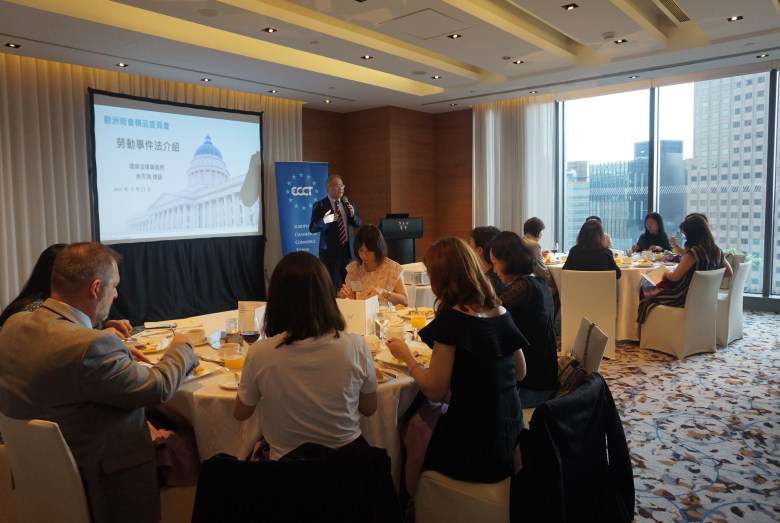New court procedures for labour disputes

The ECCT's Luxury Goods good committee hosted a lunch on the new court procedures for labour disputes featuring guest speaker Lawrence Yu, Partner at Lee and Li Attorneys-at-Law. The speaker gave an overview of the Labour Dispute Act and offered advice for employers on how to deal with the challenges.
The act was passed into law on 9 November 2018. The implementation date of the act is subject to the Judicial Yuan's decision but it is expected to take effect in January 2020. The purpose of the act is to facilitate effective resolutions of labour disputes, protect labourers’ rights in all dispute resolution proceedings, and ensure symmetry of information and equal footing for both the labourer and the management so that the parties have a chance to resolve disputes by mutual agreement.
The act aims to resolve labour disputes more effectively through court-appointed mediation. The first mediation should happen within 30 days of a request. The aim is to settle disputes within six months but this is not a fixed time limit and may be extended if the complexity of the case requires it. While the intention is for all labour disputes to be settled by mediation, there are exceptions for certain cases, such as sexual harassment.
Labour mediation committees comprise one labour court judge (who is in charge of procedures) and two labour mediation committee members. If both parties agree to settle their dispute during the mediation, the result is recorded and is regarded as the legal equivalent of a judgement.
Under the terms of the act, if a dispute is not resolved through mediation, the employer will bear the burden of proof with respect to salary and overtime pay calculations. In addition, employers are required to review their HR policies in response to the enactment of the act. They should also note what responses should be made at different stages of labour disputes. Trade unions may file lawsuits against their members’ employers which infringe on the interests of the majority of its members.
The speaker went on to share some case studies to give the audience examples of how employers should prepare for potential disputes that may arise in the future.

